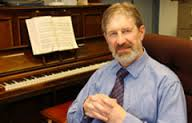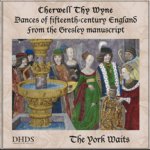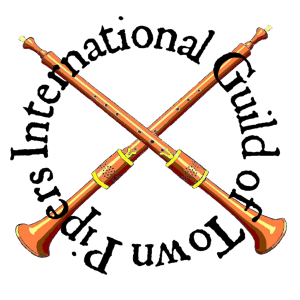The York WaitsCherwell Thy Wyne Dances from the Gresley Manuscript VideoCherwell Thy Wyne  One of the most exciting discoveries of the 1990s was the collection of dance choreographies and tunes written c 1500 near Ashbourne, Derbyshire, and now in the County Record Office in Matlock. David Fallows’s preliminary investigation, published in the Royal Musical Association Research Chronicle 29 (1996), pp. 1-20, showed that there were 26 dance choreographies and 13 notated tunes, which in itself makes this manuscript a very important source of both dance-steps and music. The choreographies are in English, but the dances have predominantly French names and the collection clearly owes much to the French basse-danse tradition. The tunes are, if anything, Italianate: but over-all the collection gives a strong impression of a native English tradition. Although the area around Ashbourne may seem provincial – and indeed it was and is relatively isolated – there can be no doubt that in the years around 1500 the county gentlemen entertained themselves with a strong and flourishing dance culture. And I mean the gentlemen, for these dances are all for men only. Eight of the tunes match choreographies, so there are five tunes spare and 18 dances without tunes. Taking a pragmatic view, the Dolmetsch Historical Dance Society and the York Waits have come together to make all the dances and tunes available for use. An instruction book by Ann and Paul Kent contains all the choreographies and tunes, together with information on the manuscript and its contents (price £10 from the DHDS); and a CD (also £10 from the DHDS) provides recorded music for all the dances, performed as a dance-band of the time might have played it. These two publications are complementary, and performance of the dances needs both unless a live band is available. However, my purpose here is to review the CD only, and I have not seen the book, so this is a limited discussion. The reader is also warned that, presumably because the detailed information is in the book, the liner notes for the CD are basic, though in the circumstances adequate. Performing dances and tunes from 500 years ago is necessarily a highly speculative operation, but at least we start with some facts. Accepting the usual proportion of error and misunderstanding, we can be fairly sure of the dance-steps themselves, the repetitions of phrases, the pitches of the music and its rhythms. It has to be said that the tunes are not, on the whole, very prepossessing: but we should not be surprised at that, for with dance tunes of the late Middle Ages everything depends on the performance – the techniques and musical inventiveness that the instrumentalists put into the improvisation around the given tunes. The York Waits are as experienced as anyone about how this can be done, and the result is excellent. The CD’s purposes are several. First, there is a need for the tunes to be set out with the repeats of phrase – generally given in the choreographies – that allow each piece to be danced according to the steps given. This is largely a matter for the dance specialists, although indications in the musical notation can be taken into account too. Second, the tunes have to be filled out with appropriate instrumental textures as a late medieval band might have done it: for this, the players may double the tune with appropriate instruments, add countermelodies and/or drones, or add a rhythmic backing with percussion. Given the tune itself, it is up to the performers to create a suitable musical “setting” for it. The York Waits are old hands at this, and they bring a broad range of instruments and instrumental techniques to bear on the problem. Third, as this is a CD that must stand on its own, it should not only provide the musical means for the dancers to perform but must be itself a varied and interesting program of music to be listened to. It is hard to form a coherent program from a series of tunes that tend to share limited speeds, ranges and rhythms, and too diverse a use of instruments might make the whole CD shapeless. The York Waits deal with this – how much by instinct and how much by calculation I do not know, but I would guess that both are involved – by forming sonic links between groups of dances performed on loud or still instruments. For instance, a loud group mid-CD is performed on shawms and sackbut (dance 13), shawms, sackbut and percussion (dance 14) and then shawms and percussion (dance 15); groups of dances on quiet (“still”) instruments are given more diverse but connected instrumentations. No-one who enjoys late medieval dance music will fail to be captivated by this varied and always musically-interesting program of dances performed with the skill and aplomb that we have come to expect from the York Waits. But in this case there is another, extra, requirement. The 18 dances without tunes cannot be performed unless suitable music can be fitted to them. Even with a little doubling-up – with two dances to a particular tune – this is a demanding piece of composition: but Paul Kent, Tim Bayley and Lizzie Gutteridge have done a splendid job, producing pseudo-15th-century tunes that could easily pass for the real thing. Only in two tunes did I hear sounds (one an harmonic progression and the other a rhythmic gesture) that did not seem to be late medieval, both moments that were of the period in theory but in practice not constructed in quite a medieval way. No, I shall not tell you which they are: they are such engaging pieces that I prefer not to cast doubt on their integrity as stylistic constructions. Readers will have to listen to the CD and make up their own minds. Not that it matters very much: this is a CD to be greatly enjoyed, and all lovers of the modern performance of medieval minstrelsy will be grateful for it. Richard Rastall |
 |
